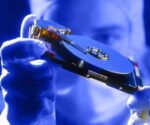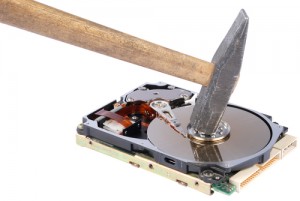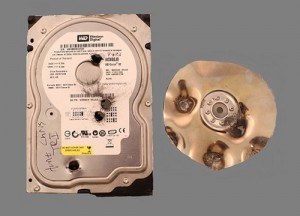Looking to destroy a hard drive filled with sensitive data? Considering data breaches have become an increasingly prevalent issue for major corporations and private consumers alike, you may want to educate yourself on the best way to render your data inaccessible to potentially malevolent hackers. Luckily there are a variety of easy ways to do this, and many of them are pretty fun.
Before we review your destruction options, there are a few steps that you’re going to want to take in any data destruction case. You’re going to want to back up any data that remains useful for you, for example, because obviously the copy on the hard drive will soon be obliterated. You also should wipe your drive before you destroy it if you want to be especially thorough about making your information irretrievable. If you’ve done all this and removed your hard drive, you have a few different options as to what to do next. Keep in mind that data recovery won’t be possible if you do any of the next steps.
Hit it with a hammer
This is a simple, conventional way to destroy a hard drive that is often a favorite among professionals. Just place your hard drive on a sturdy surface that can take a bit of a beating, put on some safety goggles and safety gloves, and hammer away at your hard drive’s platter. Be prepared for the onslaught of airborne shards of metal and glass; you’re going to want to make sure you’re wearing protective clothing and working far enough away from any people or items that you want to keep safe.
Burn it
Nothing takes a secret to the grave better than a melted hard drive. If you enjoy setting things on fire, don’t miss out on this opportunity to burn digital evidence. Just make sure that you choose a proper location with the appropriate safety precautions; place the hard drive in a fireplace or on a surface that won’t itself catch fire. You can let it sit in a standard wood fire (it should melt over time), or you can be proactive and take a blowtorch to the thing.
Shoot it

This one’s pretty self-explanatory, though it’s a much simpler process in the American South than in, say, France. Take your hard drive out to a shooting range and test your aim at different distances. Again, just make sure what you’re doing is legal wherever you’re doing it, and take the proper safety precautions.
Magnetize it
You’ve probably heard the old myth that if you run a standard magnet across a computer, you can wipe its stored memory clean. That’s not really how computers work, but you can use rare and powerful magnets to scramble data on your drive if you’re willing to devote enough money to the cause. It’s worth noting that hard drives are actually well shielded against magnetic fields, so this method isn’t quite as reliable as the ones that involve physical destruction.
Melt it
You can turn this chore into a chemistry experiment with just a little battery acid or an acid of similar strength. Just make sure you apply the acid to the hard drive in a container that can withstand the chemicals. With the proper equipment, you can sit back and watch your sensitive data dissolve.
Get out the power tools
There are a variety of helpful tools that can aid you in this goal, and if you don’t have them at home you can likely rent them at a local tool library. Try out a sandblaster if you’d like to blast away your platter’s mirror finish, or use an angle cutter to slice up your hard drive into a bunch of tiny pieces. Again, wear protective gear as appropriate.



